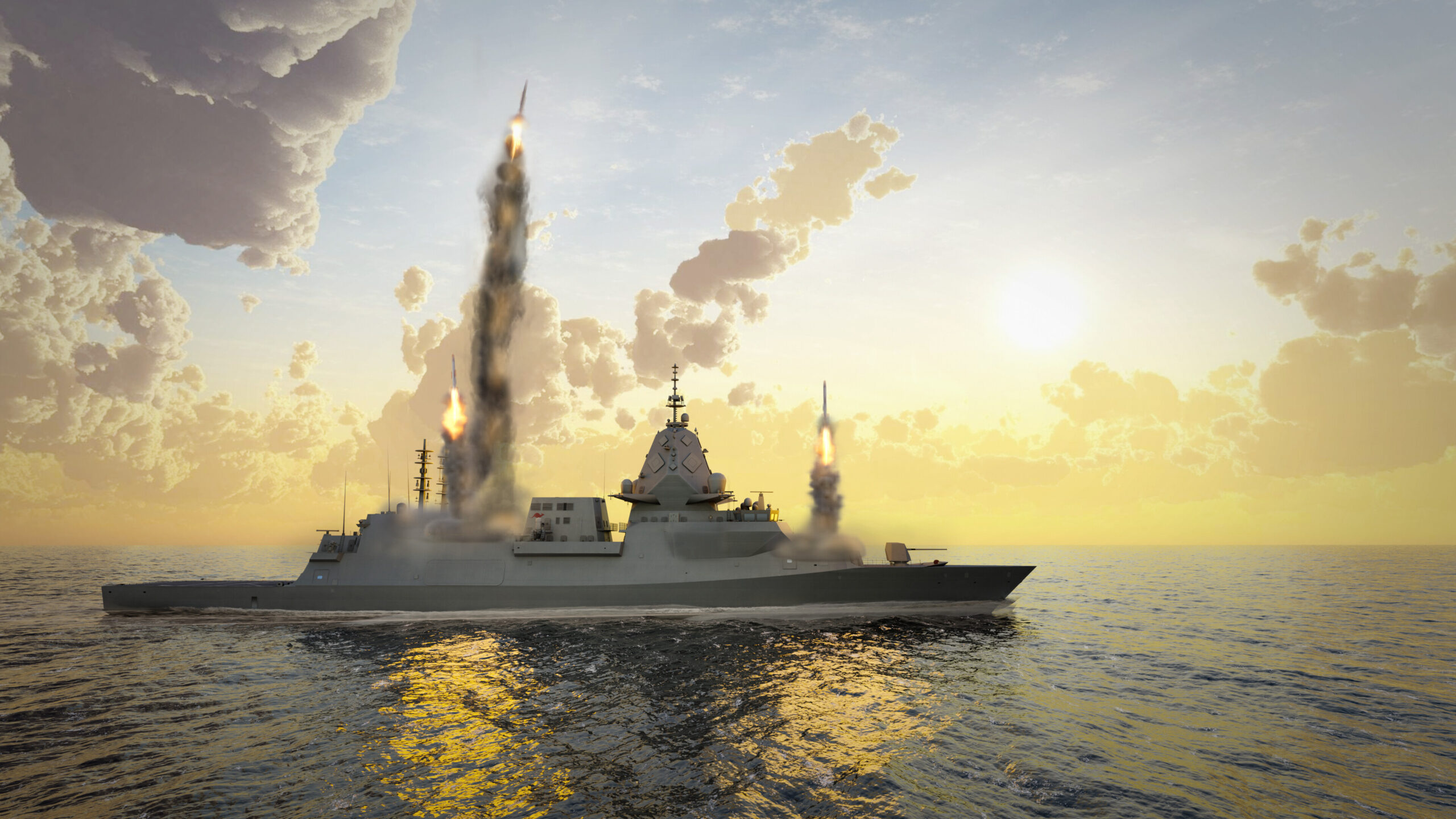
Hunter class missile frigate concept art by BAE Systems Australia
INDOPAC 2023 — In the face of persistent criticism of its troubled frigate program — not enough power, too little firepower, too heavy, too slow — BAE Systems Australia has unveiled a new version of the Hunter class that would boast 96 missile tubes, triple the existing number.
Effectively, BAE wants to create a missile frigate that can also handle a wide range of anti-submarine warfare (ASW). The $45 billion Hunter class fleet was originally designed to be, first and foremost, an ASW platform to hunt Chinese submarines. The requirements for such a ship are that it be remarkably quiet but also fast. But critics pointed to its relatively small number of missile tubes — 32 — in comparison to Chinese and other warships operating in the region. They argued this would make the nine Hunter class ships too vulnerable. The new version would boast a much more respectable 96, Craig Lockhart of BAE Systems told reporters here.
For much of the last year, Lockhart said his company has been in talks with the Australian government to explore changes to the system while keeping the basic ship design intact. Several recent reports by the Australian Strategic Policy Institute have called for the Hunter program to be cut. The most recent, by Jennifer Parker, argues that a “balanced fleet in the current era of missile capabilities requires a reduction in the production of the intended nine ASW-oriented, multi-purpose, Hunter-class frigates.
Parker argued that “the production of nine Hunter-class frigates would result in even an expanded fleet being biased towards ASW, with limited ability to field an adequate number of missiles per tonne across the fleet, impacting their ASuW (anti surface warfare) and AAW (anti-air warfare) capability.”
The modifications proposed by BAE could be made from the fourth ship onward, Lockhart said. That would mean that Australia could get Hunter class ships with a mix of capabilities should those ships be cut.
While the above was being debated, the Albanese government ordered a review of the Navy surface fleet, as recommended in the recent Defense Strategic Review (which was supposed to make recommendations on most important Austalian defense questions). The government has had that review, written by retired US admiral William Hilarides, in hand since Sept. 29 but the government’s decisions on the surface fleet will not be known until next year, Defense Minister Richard Marles has said. At the beginning of the Indo Pacific Conference, Marles may have hinted at changes to come, noting that his government had “inherited” Hunter and other systems currently being acquired.
“Obviously we’ve inherited a whole range of programs — the Hunter program, the Offshore Patrol vessels and the like — we need to build into this what we have inherited and where we should now go,” Marles said Tuesday morning.
The changes proposed by BAE should have little schedule impact, Lockhart said. The other driver, cost, should be minimally affected, Lockhart said.
“There’s no more cost that gets added to the program outside that one design zone change, therefore when you consider that as a value for money, it avoids having to complete a brand-new design from ground up,” the Scotsman said. The company basically takes a module in midship and adds most of the missile cells there. That allows them to make relatively few design changes. “You know, what is offered here is you don’t have to change your production lines,” he said.
Lockhart conceded that adding the missiles will force them “to change aspects of our propulsion system,” which would “move it away from being ASW primary role to being destroyer-variant primary role.” But the contract with the commonwealth allowed for changes to the ships from the beginning.
“Hopefully, what we’ve done is minimize the impact on schedule and cost and to provide diferrent options and capabilities,” Lockhart said. “We are maximizing the common hull design.”
When the government releases its final decisions sparked by the Hilarides report next year, BAE Systems Australia will know if they got this right.








